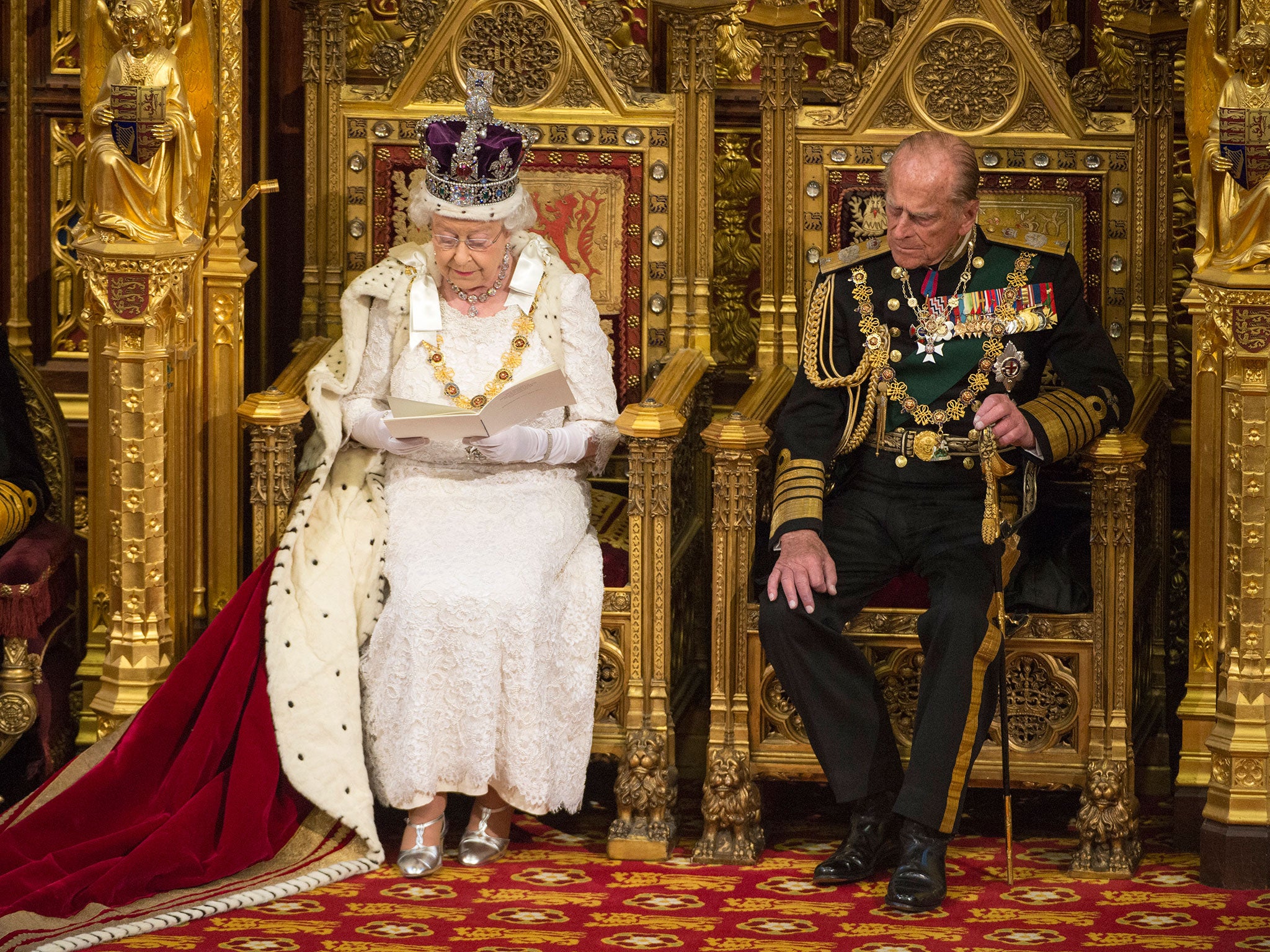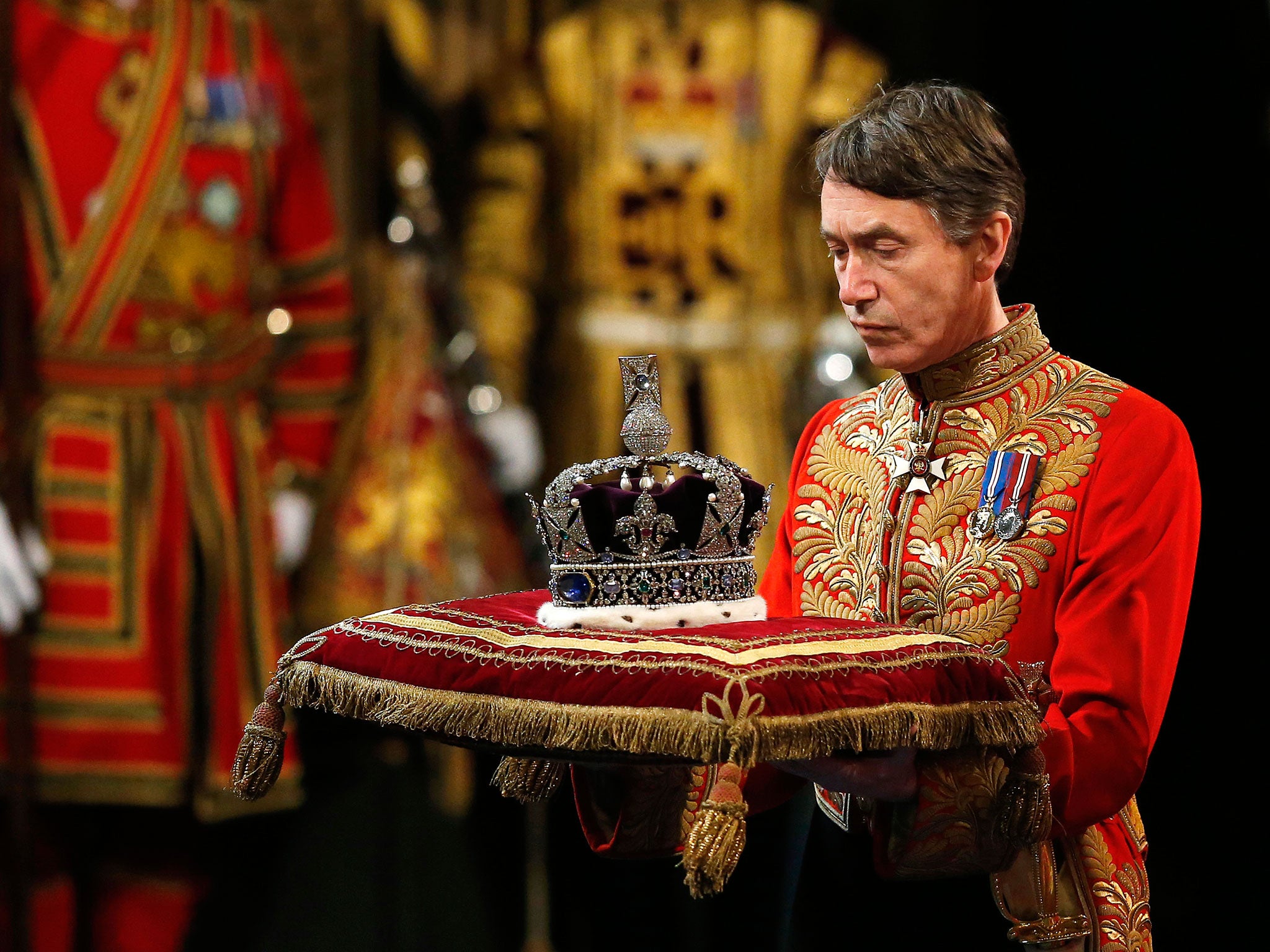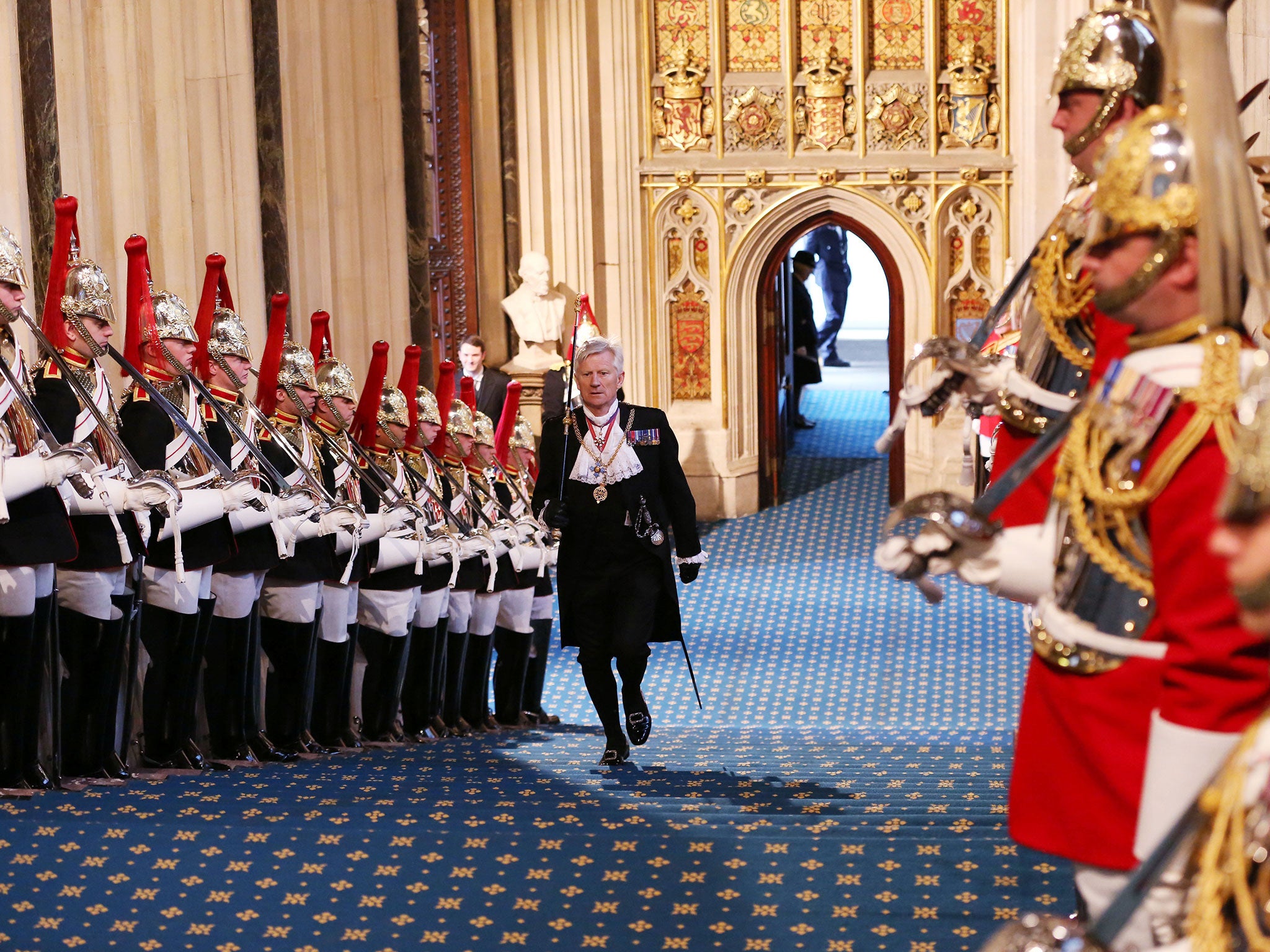Queen’s Speech 2016: Six antiquated customs of the monarch’s address to Parliament
From the hostage MP to Black Rod, Oliver Wright examines the unusual traditions involved in the State Opening of Parliament

The State Opening of Parliament is swathed in tradition and echoes of history. It marks the formal start of the Parliamentary year and the Queen’s Speech sets out the Government’s agenda for the coming session of Parliament.
Follow the latest live updates here
The ceremony itself, which takes in the Queen’s departure from Buckingham Palace, her journey to Westminster, and the speech itself, is involves a series of antiquated traditions and symbols:
The hostage MP
Much of the symbolism of the Queen’s Speech dates back to a time when the relationship between monarch and parliament was less cordial. Every year, as the Queen leaves Buckingham Palace, tradition dictates that an MP stays in the palace as a “hostage”: a token of good faith to guarantee the monarch’s safe return. Last year the role was performed by Conservative MP Kris Hopkins.
Searching of the cellars
It was the State Opening of Parliament that Guy Fawkes and the Gunpowder Plotters had in their sights in 1605. If they had succeeded they would have wiped out virtually every layer of British authority in one fell swoop. To avoid any repeat of the Plot, the cellars of the Houses of Parliament are still searched every year by the Yeomen of the Guard – the Queen’s traditional bodyguard – in advance of the State Opening. The search is only ceremonial – real life anti-terror measures take place separately and somewhat more rigorously.

The robe and crown
After her journey, in a horse drawn carriage, escorted by the Household Cavalry, the Queen enters Parliament at the Sovereign’s Entrance and makes her way to a special Robing Room. Here, she puts on the Imperial State Crown, the current version of which dates back to 1937, and the Robe of State, made of red velvet, with an 18ft long train.
The Sword of State and the Cap of Maintenance
The Crown and the other items of Regalia – the Sword of State and the Cap of Maintenance - are brought to Parliament ahead of the Queen in their own carriage.
As the Queen makes her way from the Robing Room, through a grand room called the Royal Gallery, to the House of Lords, she is preceded by a peer, usually the Leader of the House of Lords, carrying a ceremonial hat called the Cap of Maintenance, and another peer, usually a retired military officer, carrying the Sword of State.
The throne
Upon entering the House of Lords, the Queen takes her seat on an ornate gilded throne, the design of which is based on the early 14th century coronation chair in Westminster Abbey. She is often accompanied by Duke of Edinburgh or Prince Charles who may sit on lower thrones on either side.

Black Rod
Once the Queen is enthroned, a senior officer of the House of Lords, known as Black Rod, is sent from the Lords chamber to the House of Commons chamber to summon MPs.
Since 1642, when King Charles I came to arrest five MPs in the run-up to the English Civil War, no monarch has set foot in the House of Commons chamber. To assert the superiority of the Commons, the door of the chamber is traditionally slammed shut against Black Rod, who is obliged to knock three times with his ceremonial staff (his black rod). If you look carefully on a visit to Parliament, you can see the dent in the woodwork where successive Black Rods have made their mark.
The door is opened to him, he invites MPs to attend the Queen’s speech, and they follow him to the House of Lords, led by the Prime Minister and the Leader of the Opposition.
Subscribe to Independent Premium to bookmark this article
Want to bookmark your favourite articles and stories to read or reference later? Start your Independent Premium subscription today.

Join our commenting forum
Join thought-provoking conversations, follow other Independent readers and see their replies
Comments